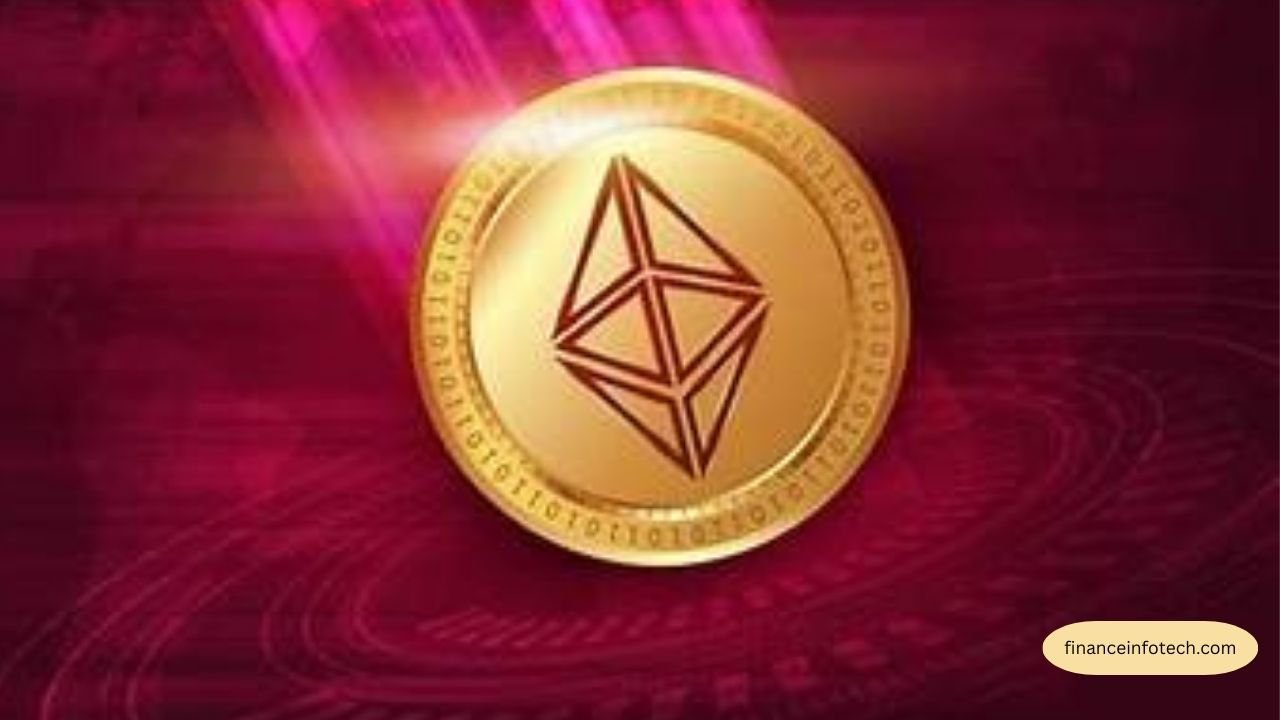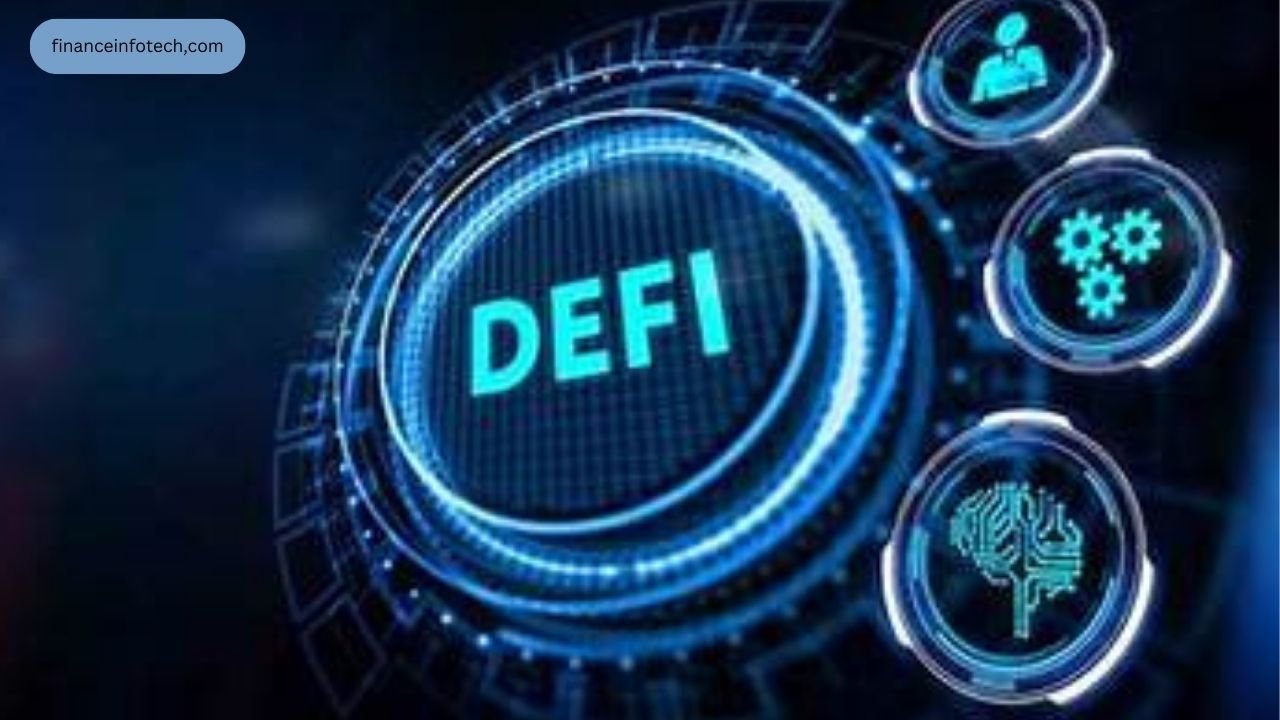Table of Contents
Ethereum and the Rise of Decentralized Finance enables De Fi, making finance open and accessible without banks. It’s changing how we use money worldwide. I This blog is covered by financeinfotech.com. In recent time, Ethereum has become the basis for a new era of financial innovation referred to as Decentralized Financial (De Fi). By enabling smart contracts as well as apps that are decentralized (dApps), ITallows any person who has an internet connection to access financial services, without brokers, banks or intermediaries.

What Is Ethereum?
Ethereum is a decentralized, open source blockchain platform that permits developers to develop and implement smart contracts and decentralized apps (dApps). It was launched in the year 2015 by Vitalik buterin and other people, It goes beyond simply recording transactions, like Bitcoin It is a computer that can be used worldwide which allows code to function exactly according to the program without interruption or interruptions due to fraud or. The currency it is native to, Ether (ETH) is utilized to pay for transactions as well as computational services offered by the network.
The heart the foundation of Ethereum is its ability to support smart contracts self-executing bits of software that are able to automatically enforce the rules and agreements. This technology has led to an extensive range of decentralized financial services (De Fi) as well as the non-fungible currency (NFTs) as well as numerous other blockchain-related advancements. it continues to grow, and is constantly undergoing updates (like Ethereum 2.0) aimed to improve the speed, scalability and energy efficiency and making it among the most popular platforms in the crypto industry currently.
How Ethereum Powers De Fi
Ethereum is the main blockchain platform for De Fi because it has the ability to program smart contracts as well as token standards such as ERC-20. These features enable developers to create decentralized applications (dApps) which can communicate with one another seamlessly.
For instance On lending platforms such as Aave where users can deposit this coin and borrow stable coins such as USDC All of which are automated via smart contracts. Ethereum’s compatibility also permits users to transfer funds between different apps such as Aave, Uniswap, and Yearn Finance in a single flow, making the entire ecosystem extremely flexible and efficient.
Popular DeFi Projects on Ethereum
This coin hosts a variety of most popular De Fi platforms. Un swap is an uncentralized exchange platform for trading tokens that do not require inter medairies. Maker DAO allows users to create DAI, a stable coin that is backed via crypto collateral. Aave and Compound allow the possibility of borrowing and lending without centralized control.
Other major players are Curve Finance for stable coin swaps Synthetix for trading in synthetic assets and Yearn Finance for yield farming and automated investments. These platforms control billions of user assets and highlight Ethereum’s potential as the foundation of the modern financial infrastructure.
Real-World Use Cases
De Fi offers real-world applications which go beyond speculation. Users can take out loans by using crypto as collateral, without requiring a bank account or credit card. Other people earn passive earnings by putting assets into yield or lending protocols to get interest.
Stable coins such USDC and DAI can also be a safe method to keep value in countries that are experiencing financial instability or high inflation. With a simple phone and a wallet application users have access to financial tools previously only available to the well-connected or wealthy.

Risks and Challenges
Despite its claims, DeFi comes with risks. Bugs in smart contracts or weaknesses could cause to significant losses. Gas costs for Ethereum can be expensive during times of network congestion, which can cost out users with lower usage.
There’s also a lack of clarity on regulations in the meantime, as governments are working out the best way to manage the decentralized platforms. Most DeFi loans require overcollateralization, meaning users must lock up more than they borrow — a limitation for broader accessibility.
Ethereum 2.0 and Scaling De Fi
Ethereum is going through major changes to ensure the long-term viability of DeFi. The transition to proof of Stake (PoS) reduces the use of energy and improves efficiency. Future features such as Sharding will increase the speed of transactions and decrease costs.
The changes are designed to resolve the issues that are currently limiting Ethereum in order to make DeFi flexible and cost-effective. As the network grows and improves, it will be better to be used for financial services that are more mainstream.
Ethereum Vs. Others De Fi Platforms
Other blockchains such as Solana, Avalanche, and Binance Smart Chain offer lower costs and speedier rates, however they typically compromise decentralization or long-term security. Ethereum is as the securest, most secure decentralized platform with the largest number of developers and users in De Fi.
Its network of interoperable applications as well as its deep liquidity and demonstrated reliability give an edge. Even in the face of competition, this coin remains to be the top choice for high-quality DeFi technology.

The Future of DeFi on Ethereum
Future prospects for DeFi looks bright as well as rapid. Real-world assets that are tokenized, such as stocks and real estate could soon be normal. The decentralization of identities and credit score systems could open access to billions of non-banked customers.
Expect to have improved interfaces, greater cross-chain functions, and brand new tools for risk, insurance management and savings. With this coin as the central point De Fi’s goal is to transform finance, to make it more transparent, inclusive and efficient.
FAQs
1.What exactly is Ethereum employed for in De Fi?
This coin serves as the infrastructure for De Fi hosting smart contracts which allow trading, lending, lending and much many more all with no intermediaries.
2. Is De Fi secure to use?
De Fi is powerful, but it’s also dangerous. Although many of the projects are secure but hacks and bugs can occur. Always conduct your own research and make sure you use audited platforms.
3.Do I have to confirm my identity to utilize De Fi?
Absolutely not -The De Fi platforms are permission less. All you require is a crypto wallet similar to Meta Mask. There is no KYC or ID is required.
4.What’s the distinction in De Fi or traditional financing?
De Fi is decentralized and transparent and programable unlike traditional finance which is reliant on central banks, regulations and manual procedures.
5.Is Ethereum the sole blockchain used for De Fi?
It’s not, but it’s the most used and reliable. There are other chains (like Solana or Avalanche) However, coin remains the best in terms of developer activity total valued locked (TVL ),and security.
Conclusion
Ethereum has revolutionized the rules of play in regards to financial transactions. With smart contracts, it has allowed individuals to obtain loans, trade and even save without the need of middlemen or banks. This new approach to managing money is more transparent and gives individuals greater control over their financial affairs. As it is constantly improving and becoming more efficient, De Fi will likely to be a bigger element of the way we manage money in the near future.
